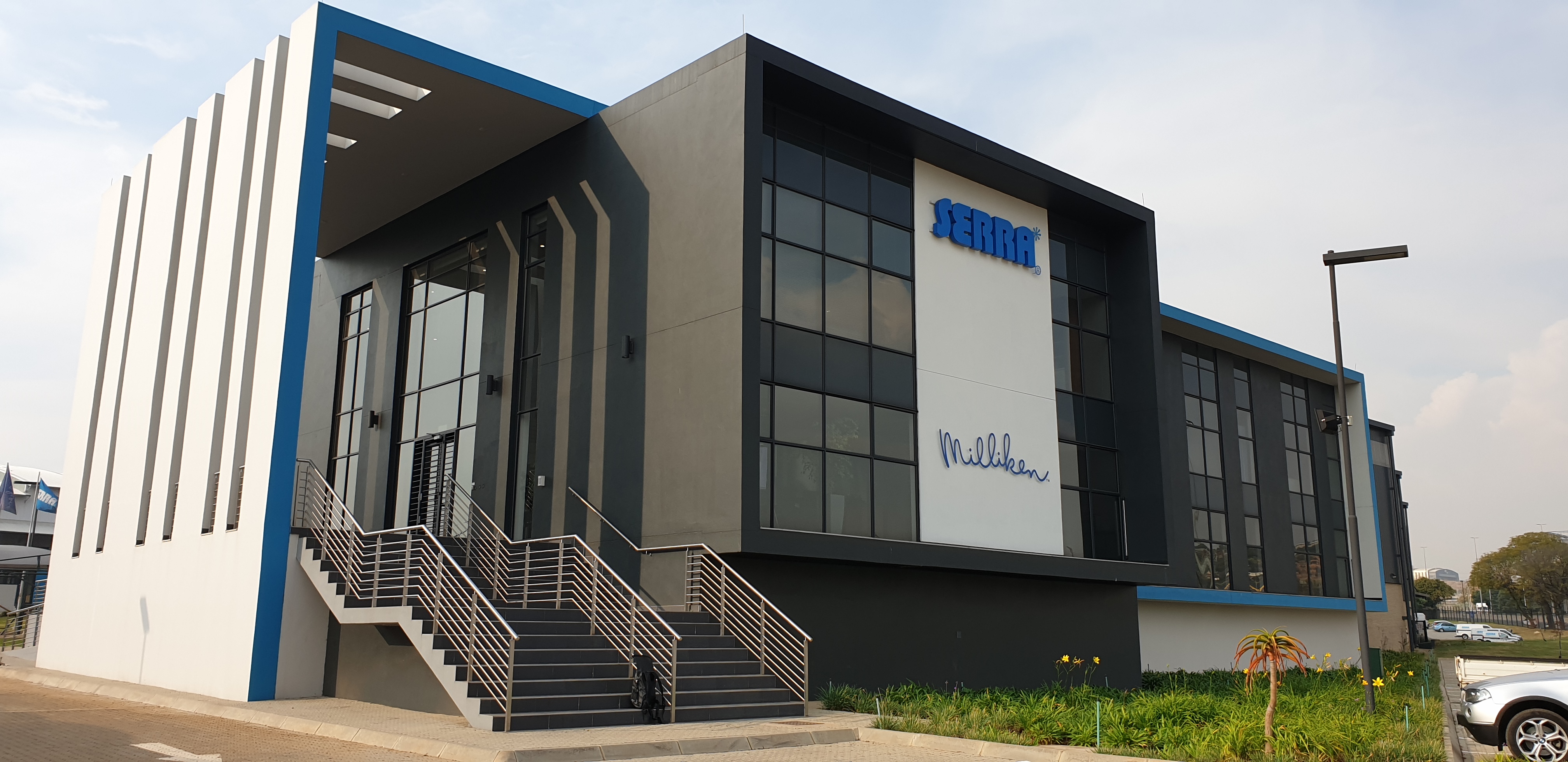
Green Star – EBP Custom Industrial pilot rating tool set to be a catalyst for greening industrial properties in South Africa
June 24, 2022
The Green Building Council South Africa (GBCSA) announces the launch of their new Green Star – Existing Building Performance (EBP) Custom Industrial pilot rating tool.
Sponsored by Growthpoint Properties, the pilot tool is now available for all industrial properties to use.
The South African industrial property sector has shown positive growth year-on-year post lockdown in 2020 (source: StatsSA). This is attributed in part to the rapid expansion of ecommerce (accelerated by the pandemic) leading to increased demand for logistics and warehousing type spaces. But as we ‘build back better’ after the pandemic, industrial buildings could have a key role in South Africa’s net zero journey too.
Industrial buildings form a notable portion of South Africa’s existing building stock. Better-managed and better-performing green industrial buildings have great potential to decrease energy and water consumption, as well as reduce waste-to-landfill production. Furthermore, warehousing and distribution centre types of buildings often have the capacity, because of their roof-space-to-energy-use ratio for solar panels, to generate more energy than the building demands, enabling them to be exporters of energy.
“Industrial buildings, such as warehouses, manufacturing plants, and logistics facilities, play a key role in the smooth running of national and regional economies. It’s vital that these assets are future-proofed for the impacts of a changing climate and the rising costs of energy, water, waste, and emissions, as well as delivering a range of other benefits for their tenants,” explains Errol Taylor, head of Asset Management: Industrial at Growthpoint.
A new custom tool in response to a noteworthy market trend
Wanting to respond constructively to this market trend and to support the variations of the industrial property market, the GBCSA board gave a directive that the Green Star – EBP rating tool should be specifically customised for existing industrial buildings in December 2020.
The GBCSA’s existing Green Star – EBP tool is aimed at rewarding buildings that are managed sustainably well, can demonstrate good operational performance over a measured period, and that contribute towards better quality spaces for tenants. “When the original EBP tool was developed, it endeavoured to take as many building typologies as possible into account, but there were nonetheless limitations and, in reality, it has largely been applied to the commercial office segment of the market,” explains GBCSA head of Technical, Georgina Smit.
The customisation process was adopted to ensure that GBCSA can offer the market standardised guidelines for energy and water benchmarking of industrial buildings, as this currently does not exist in the South African property market. Furthermore, nuances around industrial building ownership needed to be slightly reconsidered within the tool to better serve the market. For example, many single tenancies operate on triple net leases which places a lot of the operational decision making with the tenant and not the landlord. “A custom tool is not a new one, but instead focuses on customising the existing tool for a new typology, to better suit the functionality and user profile of that typology” explains Smit.
As a founding member of the GBCSA, and committed advocate for a more sustainable built environment, Growthpoint Properties came on board to sponsor the EBP Custom Industrial tool development. “Owning and operating green-rated buildings is integral to delivering our ESG strategy including tracking towards our target for all Growthpoint’s buildings to operate at net zero carbon by 2050,” says Grahame Cruickshanks, head of Sustainability and Utilities at Growthpoint Properties.
With a portfolio of assets in South Africa spanning all three traditional property sectors (office, industrial, and retail), Growthpoint notes that the GBCSA’s Energy Water Performance (EWP) benchmarking tool, which is integrated into the EBP tool, facilitates bottom-up learnings on efficiency and costs as well as top-down learnings for sustainability and accessing financial products. This tool has been an essential starting point for Growthpoint’s green journey, and Cruickshanks believes a customised tool will add tremendous value for industrial properties.
GBCSA technical manager, Jenni Lombard, headed the project internally, and sustainability consultants Sow and Reap and Imbue Sustainability came on board to assist with the tool customisation. Francois Retief from Sow and Reap comments that the industrial typology is an interesting one because the sector itself is quite varied, with sub-categories including distribution centres, warehousing, light-manufacturing, workshops, and more. Also, because of the leasing structures which place more responsibility on the tenant than the property owner, issues of sustainability in the building are often neglected as they are seen as secondary to the industrial activities themselves, or responsibility is unclear between owners or occupiers. “As such, it is important to create a framework which allows for landlords and tenants to work together at improving the assets,” adds Retief.
What’s different about the new EBP Custom Industrial pilot tool?
The Custom Industrial pilot rating tool follows the same structure as the current Green Star – EBP v1 tool, but with clarifications and benchmarks specific to the industrial sector. Some specific differences property owners can expect to see are:
- Credits that are better aligned with the varied kinds of industrial building typologies. With respect to energy and water, benchmarks have been put forward for specific sub-categories such as distribution centres, warehousing, light manufacturing, and workshops. All energy and water usage is included within the benchmarking process, with certain conditions set out for the exclusion of unusually large process loads.
- A new Energy and Water Benchmark Framework that can be used when following benchmarking operational performance for the industrial sub-categories. This has been developed from a dataset collected specifically from existing industrial buildings and will perform the function of providing a simplified industry benchmark, but one that has taken some normalising factors into account. Existing operational performance data was contributed by major REITS, analysed by the appointed sustainability consultants, and new benchmarking parameters were set to form this framework. “The significance is that it will tangibly support industry by offering a standardised methodology for analysing energy and water performance data both for comparisons (that is, to compare apples with apples) as well as in offering indicative benchmarks based on primary data that has been collected,” adds Smit.
- Credits that support property owners and tenants working together at improving assets. As with the EBP v1 tool, property owners are able to address some credits without necessarily involving tenants. However, for many of the credits relating to building management practices such as waste management, green cleaning, and so on, it will be necessary to have the tenant commit to implementing such procedures. “The custom tool incentivises increased engagement with tenants. We believe that this will be critical not only in the success of the tool but also has huge potential knock-on effects into tenant processes,” says Retief.
Taylor anticipates that over time the new tool will demonstrate that Green Star – EBP Custom Industrial certified buildings outperform non-certified industrial buildings against ESG criteria and financial returns on investment. Smit concludes: “GBCSA hopes to support the market transformation of the industrial sector, in the same way it supported the journey of the commercial office space, with this tool. We are also hoping to embark on a journey of continuous energy and water data collection in order to refine benchmarks for future iterations of the EBP tool.”
For more information about the Green Star – EBP Custom Industrial pilot tool please contact the GBCSA at [email protected]
About GBCSA:
The GBCSA works with its membership community to transform the built environment for people and planet to thrive. We are passionate, collaborative planet shapers that operate across the commercial, residential and public sectors to ensure that buildings, homes, and precincts are designed, built and operated in an environmentally sustainable way. Our combined influence drives competitive, viable and professional membership advantages. GBCSA’s affiliations enable access to a community of experts at home and abroad. The GBCSA is one of about 75 members of the World Green Building Council. Together we create a platform for advocacy, training and certification. Visit our website gbcsa.org.za or connect on LinkedIn, Instagram, Facebook or Twitter.
About Growthpoint Properties:
Growthpoint creates space to thrive with innovative and sustainable property solutions in environmentally friendly buildings, while improving the social and material wellbeing of individuals and communities. It is an international property company invested in real estate and communities across Africa, Australia, the UK, and Eastern Europe, and is South Africa’s largest primary JSE-listed REIT. Growthpoint is 50% co-owner of the V&A Waterfront in Cape Town. It is an established leader in commercial green developments and owns and manages the biggest portfolio of green-certified buildings in Africa. Visit growthpoint.co.za for more information, and connect with Growthpoint on Facebook, Twitter, LinkedIn and YouTube.






